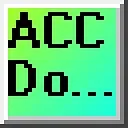0:07
master PLC motor control your key to
0:09
interview success understanding two-b
0:12
button motor starters in PLC programming
0:14
is crucial for your upcoming interview
0:16
it demonstrates your practical knowledge
0:18
and problem solving skills setting you
0:20
apart from other candidates by mastering
0:23
this fundamental concept you'll not only
0:25
ace your interview but also lay a solid
0:28
foundation for your career in industrial
0:30
automation let's dive into the
0:32
essentials of two-b button motor
0:33
starters and boost your interview
0:35
readiness let's start with the basics of
0:37
a twobutton motor starter in PLC
0:40
programming this control circuit uses
0:42
two push buttons typically labeled start
0:45
and stop to manage motor operation
0:47
efficiently and safely the start button
0:50
initiates the motor's operation while
0:52
the stop button halts it this setup is
0:55
widely used in industrial applications
0:57
for enhanced safety and operational
0:59
control in PLC programming implementing
1:02
a two-b button motor starter involves
1:04
creating a latching circuit this crucial
1:07
step maintains the motor's running state
1:09
even after releasing the start button
1:11
the latching is achieved through a
1:12
normally open auxiliary contact of the
1:15
motor starter this contact closes when
1:17
the motor starts and opens when it stops
1:19
ensuring continuous operation until
1:21
intentionally halted to program a two-b
1:24
button motor starter using ladder logic
1:26
follow these steps first use an output
1:30
coil to represent the motor starter then
1:32
add a normally open contact for the
1:34
start button and a normally closed
1:36
contact for the stop button finally
1:39
create a latch by adding a normally open
1:41
contact in parallel with the start
1:43
button when implementing safety
1:45
considerations in a two-b button motor
1:47
starter circuit focus on these key
1:49
aspects use a normally closed stop
1:52
button for failsafe operation implement
1:54
emergency stop buttons at critical
1:56
locations and incorporate motor overload
1:59
protection to prevent damage and ensure
2:01
longevity if a motor fails to start when
2:04
the start button is pressed follow this
2:06
troubleshooting process begin by
2:08
checking physical components such as
2:09
fuses circuit breakers and wiring next
2:13
verify the PLC input and output
2:15
connections for any loose or faulty
2:17
connections finally review the ladder
2:19
logic program for errors or unexpected
2:22
conditions that might prevent motor
2:23
startup to adapt the circuit for a
2:26
jogging function add a third button that
2:28
bypasses the latching circuit this
2:30
jogging button directly controls the
2:32
motor while held allowing for precise
2:34
positioning or intermittent operation as
2:36
needed in certain applications
2:39
familiarize yourself with different
2:40
types of motor starters full voltage
2:43
reduced voltage and variable frequency
2:45
drive starters understanding when each
2:48
type is most appropriate will
2:50
demonstrate your comprehensive knowledge
2:51
of motor control systems be prepared to
2:54
discuss realworld applications of two
2:56
button motor starters common examples
2:59
include conveyor systems and
3:00
manufacturing plants pump controls and
3:02
water treatment facilities and various
3:05
industrial machinery where controlled
3:07
start and stop functions are crucial for
3:09
safety and efficiency while mastering
3:11
two button motor starters is crucial be
3:15
pitfalls one frequent mistake is
3:17
neglecting to implement proper
3:19
interlocking between multiple motor
3:20
starters this can lead to dangerous
3:23
situations where conflicting operations
3:27
to avoid this always ensure that your
3:29
PLC program includes mutual exclusion
3:31
logic this prevents multiple motors from
3:34
starting in conflicting scenarios
3:36
enhancing both safety and operational
3:39
efficiency another common mistake is
3:41
overlooking the importance of motor
3:43
overload protection while basic start
3:45
stop functionality is essential failing
3:48
to incorporate overload protection can
3:50
lead to motor damage and system downtime
3:53
to address this always integrate
3:55
overload relays or motor protection
3:57
devices into your control system these
3:59
devices monitor motor current and
4:01
temperature automatically shutting down
4:03
the motor if unsafe conditions are
4:05
detected lastly a critical error is
4:08
failing to implement proper emergency
4:10
stop functionality simply relying on the
4:12
standard stop button is insufficient for
4:14
true safety compliance to rectify this
4:17
incorporate dedicated emergency stop
4:19
buttons at key locations around your
4:21
equipment these should be hardwired to
4:24
immediately cut power to the motor
4:26
bypassing the PLC if necessary to ensure
4:28
the fastest possible response in
4:30
emergency situations now that you've
4:32
mastered the essentials of two button
4:34
motor starters in PLC programming it's
4:37
time to put your knowledge into action
4:39
remember understanding these concepts
4:41
not only prepares you for your interview
4:43
but also sets you up for success in your
4:46
career in industrial automation
4:48
thank you for watching this guide on PLC
4:51
interview prep focusing on two-b button
4:52
motor starters we hope this information
4:55
helps you ace your interview and advance
4:57
your career in PLC programming good luck
5:00
and remember to always prioritize safety
5:03
and efficiency in your designs if you
5:05
found this video helpful don't forget to
5:08
like share and subscribe for more PLC
5:11
programming tips and interview
5:12
preparation guides your success is our
5:15
goal and we're here to support you every
5:17
step of the way in your industrial

